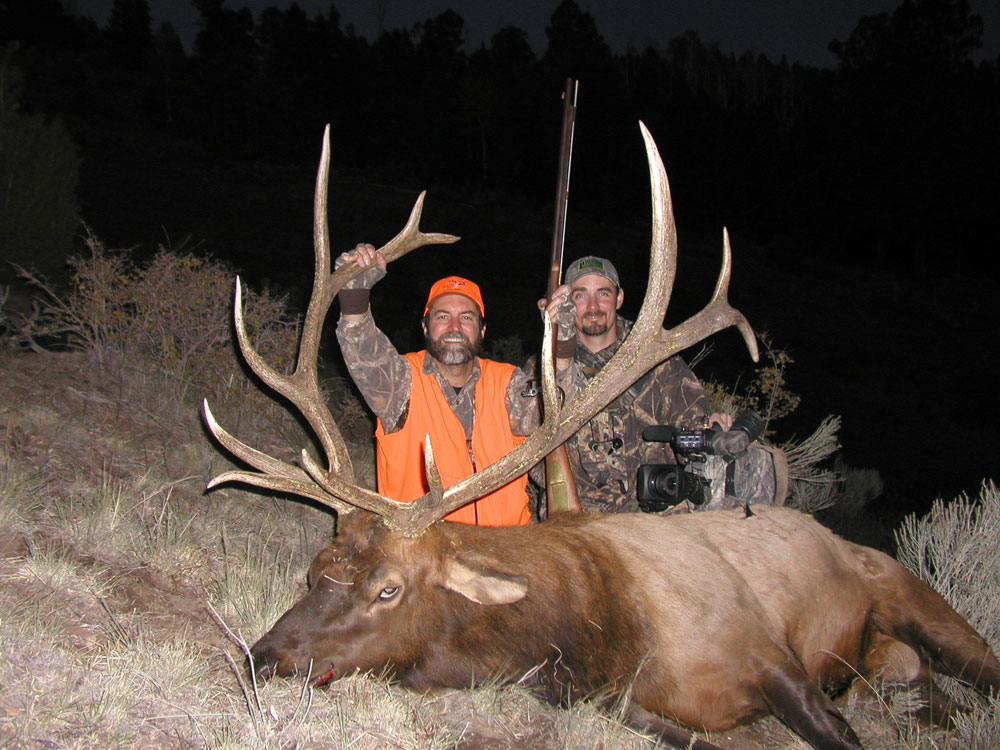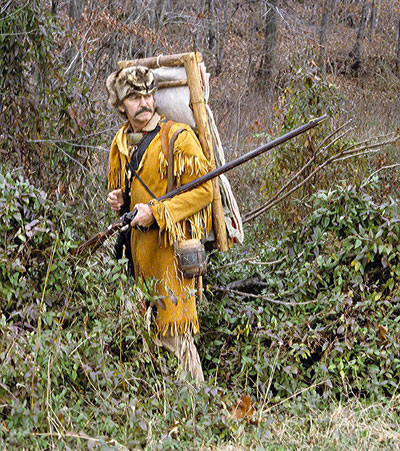provided by John Phillips
Longtime Mossy Oak Pro Will Primos of Flora, Mississippi, has been hunting elk every year since 1988. He said, “I’ve had some fantastic opportunities in my lifetime to call in hundreds of bull elk.” Primos, the creator of Primos Hunting hunts for elk in three states annually. He’s been producing videos and products for the elk-hunting industry for many years. “We wanted to get the public excited about not just elk but hunting and protecting them as well,” he said. “We’re strong supporters of the Rocky Mountain Elk Foundation and its mission.” Primos doesn’t just call and take elk himself, he also guides and calls for other people. Primos has taken or called more than 200 elk for others for his videos, “Primos The Truth 19: Big Bulls Video.”

All but four bulls that I’ve taken in my lifetime have been with a bow, but this was a special hunt where I took a bull elk with a .54 caliber flintlock rifle. I’m a big fan of the 8,000-mile Lewis and Clark Expedition in 1804 exploring the Louisiana Purchase. The U. S. bought it from France for 3 cents per acre from the Mississippi River west to the Rocky Mountains and from the Gulf of Mexico to the Canadian border.
This hunt was to be in Colorado, right below Culebra Peak, part of the Sangre de Cristo Range. I had contacted the Harper Foundry in Pennsylvania who had built the guns for Lewis and Clark to take on this expedition. These were a carbine type of flintlock rifle and the .54 caliber flintlock was much shorter than the Kentucky Long Rifle. I took one of the flintlock carbine rifles with me on this hunt to commemorate the Lewis and Clark Expedition.
 I’m a real fan, too, of the movie, “Jeremiah Johnson,” because it showed what the early hunters and trappers of the United States had to do to help open up the new Louisiana Purchase for settlers to follow them into this new portion of America after 1803. I wanted to put myself in the same position. So, I decided to film me taking a bull elk with the same type of rifle used back in the early 1800s.
I’m a real fan, too, of the movie, “Jeremiah Johnson,” because it showed what the early hunters and trappers of the United States had to do to help open up the new Louisiana Purchase for settlers to follow them into this new portion of America after 1803. I wanted to put myself in the same position. So, I decided to film me taking a bull elk with the same type of rifle used back in the early 1800s.
The hunt was scheduled for five days, and we were struggling. On the afternoon of the fifth day of the hunt, one of our guides, Alonzo Labata, told us that he thought a big elk was coming down a drainage. He didn’t think anyone else had found this elk. So, we moved into that area. As the sun went down, we heard the bull and started calling to him. The bull was bedded at about 400 yards from where we were, and we only had to move about 20 yards to get close to him. Since this bull was following a big herd of cows, instead of calling the bull, we started talking to the cows. Those cows headed toward us, bringing the bull along behind them.
I was wearing my favorite - Mossy Oak Bottomland camo - because that pattern works best for me in that high mountain country. I realized that shooting a flintlock was much different from shooting a conventional rifle or a bow because there’d be a slight delay from the time I squeezed the trigger to when the powder ignited and the gun fired. I had my gun tuned-up, so there was only about a half a second delay from the time I squeezed the trigger until the gun fired. I practiced quite a bit on my follow-through to make sure I didn’t jump, flinch or move the barrel of the gun until well after it had fired. The bullet hit the elk just above the heart, and he only traveled about 60 yards before he went down. He scored about 335 inches.
This hunt was a win-win. We’d called a beautiful bull up to within 12 yards of us, and I was able to take him. Being able to walk in the footsteps of Lewis and Clark was a great experience. However, one unique sidebar to this story is that three months after this hunt, documentation was found that the history books failed to accurately report that the guns that Lewis and Clark took on their expeditions were not the .54 caliber flintlock carbine with which I hunted. Although those guns were what the expedition was supposed to use, they weren’t ready in time for the Lewis and Clark Expedition. The Expedition had to take long rifles (Kentucky-style flintlocks) with them on their historic trip across the Northwest. Even though we were trying to portray a hunt with the Lewis and Clark rifles, when this new documentation was found, we learned we did the right thing with the wrong gun.



























